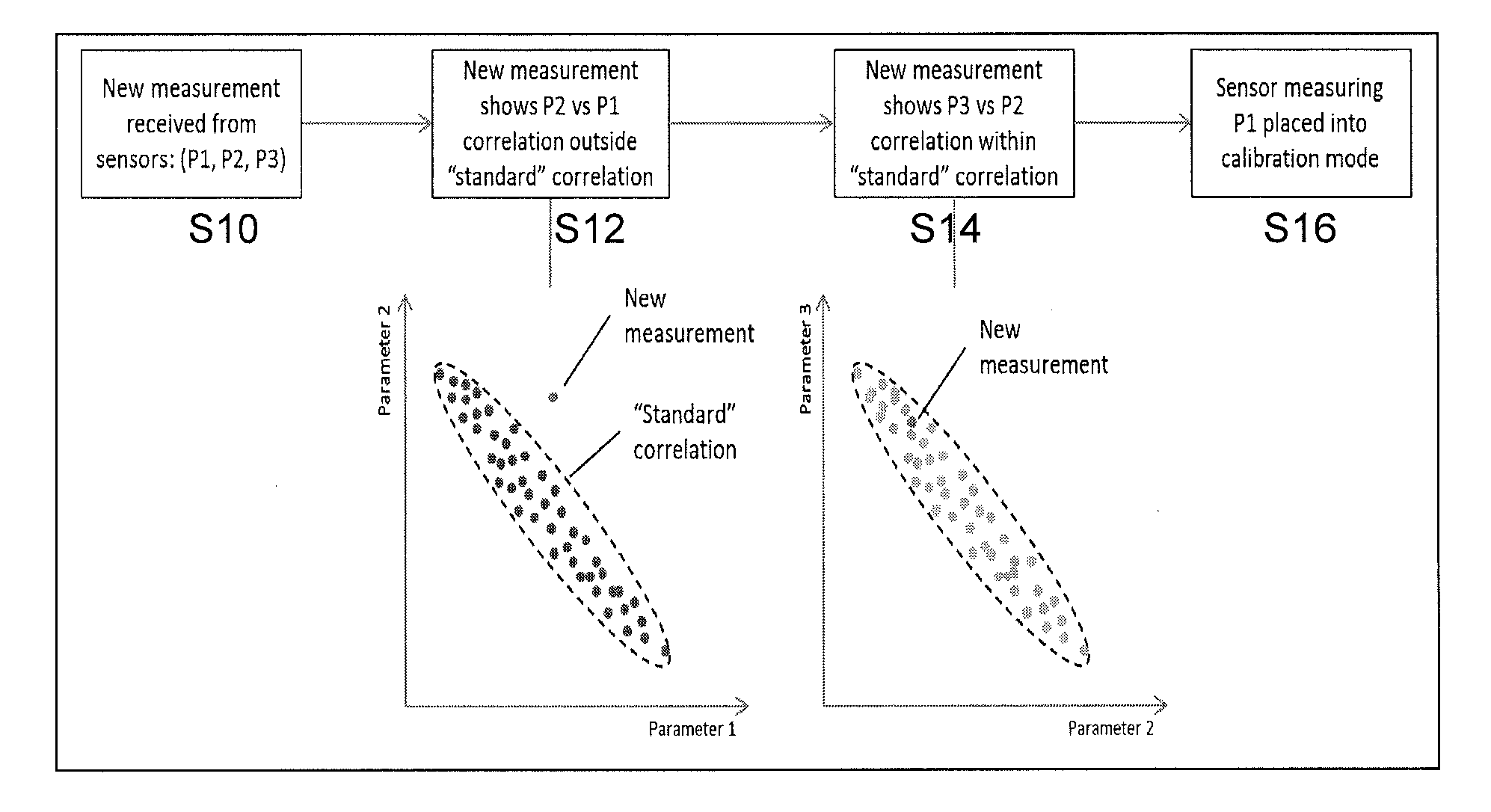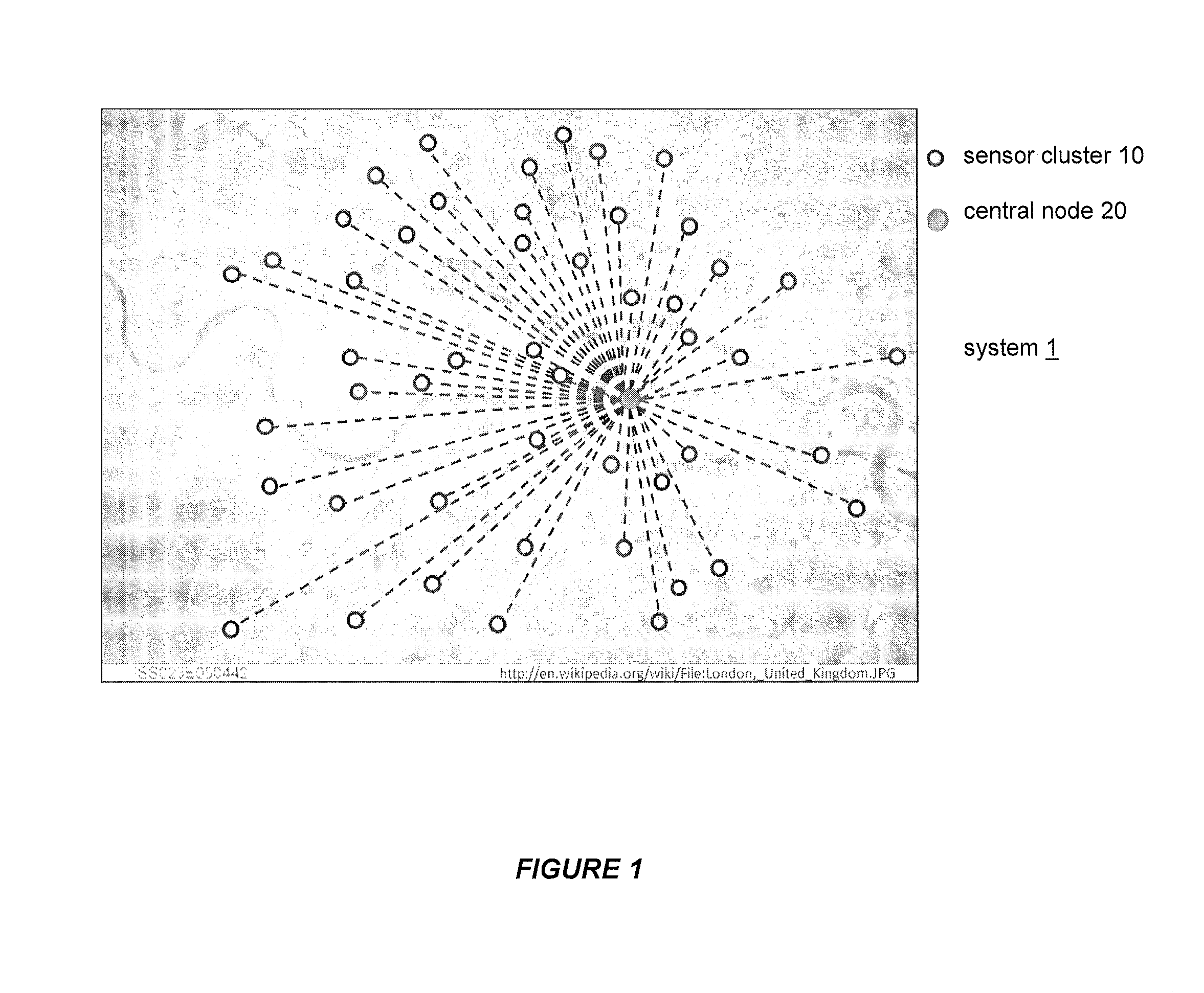Method of managing sensor network
a sensor network and sensor technology, applied in the field of managing sensor networks, can solve the problems of high maintenance cost of sensors networks, affecting the wider deployment of sensors in both developed countries, and the methodology used to operate the network of sensors may not maximize the information that could be provided by the network
- Summary
- Abstract
- Description
- Claims
- Application Information
AI Technical Summary
Benefits of technology
Problems solved by technology
Method used
Image
Examples
Embodiment Construction
[0081]Reference will now be made in detail to the embodiments, examples of which are illustrated in the accompanying drawings, wherein like reference numerals refer to the like elements throughout. The embodiments are described below to explain the present invention by referring to the figures.
[0082]With the aim of improving management of sensor networks, embodiments of the invention address three types of errors that may arise when using a large number of sensors placed in remote locations which are difficult and / or expensive to access for performing calibration, maintenance and replacement:
[0083](i) Loss of calibration of sensors
[0084](ii) Random errors inherent in sensor measurements, and
[0085](iii) Environment-dependent damage / degradation of the sensor.
[0086]Embodiments provide a network (“sensor network”), made up of a plurality of groups of sensors preferably of different types (“sensor clusters”), where the sensor clusters need not be identical, that is to say each cluster ne...
PUM
 Login to View More
Login to View More Abstract
Description
Claims
Application Information
 Login to View More
Login to View More - R&D
- Intellectual Property
- Life Sciences
- Materials
- Tech Scout
- Unparalleled Data Quality
- Higher Quality Content
- 60% Fewer Hallucinations
Browse by: Latest US Patents, China's latest patents, Technical Efficacy Thesaurus, Application Domain, Technology Topic, Popular Technical Reports.
© 2025 PatSnap. All rights reserved.Legal|Privacy policy|Modern Slavery Act Transparency Statement|Sitemap|About US| Contact US: help@patsnap.com



